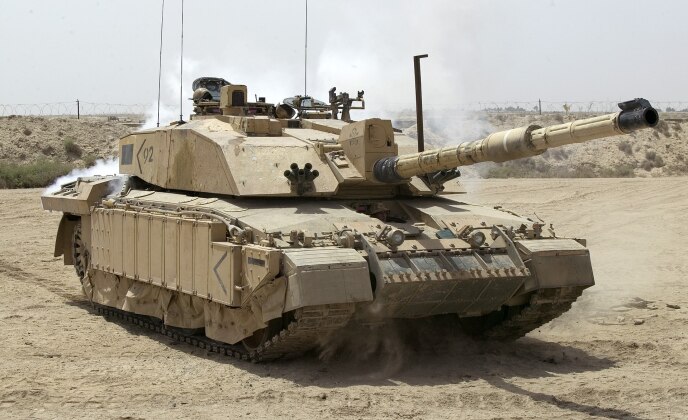News
The West’s Newest Tank: How Dangerous Are the Challenger 2s Britain is Sending to Ukraine?
On January 14 British Prime Minister Rishi Sunak confirmed that London would provide Challenger 2 main battle tanks to Ukraine’s armed forces, with Downing Street highlighting that the move signified “the UK’s ambition to intensify support.” Ukrainian President Volodymyr Zelensky, who spoke to Sunak earlier that day, said the delivery “will not only strengthen us on the battlefield, but also send the right signal to other partners.” The Challenger 2 represents the first post-1960s Western tank approved to be sent to Ukraine, with the British decision potentially paving the way to further transfers of the much more widely used Leopard 2 tanks by several NATO members such as Poland and Spain, which have long shown a strong interest in equipping the Ukrainian Army with the vehicles.
The Leopard 2 and American M1 Abrams were developed in parallel to the Challenger 2’s predecessor the Challenger 1, with all three entering service from 1979-1983 and having a number of commonalities from weight range to gun calibre. The Challenger 2 was developed as part of a newer generation of vehicles and entered service from 1998, making it the newest Western tank design operational today. The tank represented a clean sheet design with only 3 percent parts commonality with the preceding Challenger 1. Despite advantages over its German and U.S. rivals in terms of armour protection, the British vehicle saw a much shorter production run which ended in 2002, and only one export contract was signed to equip the Royal Army of Oman. The tank’s lack of a smoothbore gun, and its service entry after the end of the Cold War when smaller defence budgets prevented it from gaining momentum, were major setbacks to the program. As a result the Leopard 2 and M1 Abrams remain the only Western tanks in production today, and are both widely used by NATO members.

Fourteen Challenger 2 tanks are expected to equip the Ukrainian Army as part of a first aid package, although questions have been widely raised regarding how quickly they can be made ready for frontline service. The practicality of operating Western tanks in Ukraine, which use different gun calibers and spare parts and require very different maintenance, training and munitions to the Soviet tanks the country currently operates, has repeatedly been put to question. The Challenger’s very heavy weight, at approximately 75 tons with combat armour, also makes it around 50 percent heavier than the T-72s and T-64s Ukraine operates and less able to use local bridges or operate in cities. The tank nevertheless has a number of notable strengths, most significantly its second generation Chobham armour, and options for Explosive Reactive armour and additional bar armour. Its base armour is considered by far the most durable of all Western tank designs.

The Challenger 2’s fire controls, while advanced for their time, are mediocre today although still significantly ahead of those of other tanks Ukraine uses. The tank’s use of a diesel rather than a gas turbine engine makes it less fuel hungry than American Abrams or Russian T-80 tanks, although providing a more limited degree of mobility more comparable to Ukraine’s T-72s and T-64s. Aside from training and logistics issues, the Challenger 2’s main drawback is its reliance on a rifled gun which prevents it from using penetrative rounds that would be needed to threaten top end Russian tanks such as the T-90M – an issue the British Army is addressing in the an upcoming upgrade package by rearming the vehicles with smoothbore guns. With British Defence Ministry set to only fund upgrades for under 150 Challenger 2s, and retire the remainder, up to 200 tanks could be available in reserves for eventual transfer to Ukraine. Alongside expected deliveries of large numbers of Leopard 2s, this could make the Eastern European country a leading operator of third generation Western tanks.












